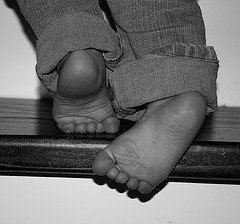Poor housing, maternal depression and money worries are just some of the risk factors that can affect a young child’s health and, according to a new report, the majority of Kiwi kids will be exposed to some of these risk factors in their first few years of life.

A new report based on data from the 7000 children enrolled in the Growing Up New Zealand study has examined the risk factors associated with poor health and development out comes for infants.
“Exploring the Definition of Vulnerability for Children in their First 1000 Days” evaluates how commonly New Zealand children experience twelve family and environmental risk factors (listed below) that have previously been shown to increase the chances that children will have poor developmental outcomes. For example, being born to a teenage mother, living in overcrowded accommodation, or having parents who receive an income-tested benefit is associated with poorer health outcome for young children.
In particular report found that factors rarely occurred in isolation and children were exposed to ‘clustered’ multiple risk factors, suggesting a more complex analysis was required to identify at-risk children. Growing Up in New Zealand Director Associate Professor Susan Morton explained. “… one risk factor on its own is not sufficient to define which children are most vulnerable. Our analysis found that in reality these single risk factors tend to cluster, and that we may be in a better position to understand which children and families need the greatest support in early life if we consider combinations of factors, rather than single risk factors.”
The report has received national media coverage including:
Radio New Zealand: Study aims to help children at risk
New Zealand Herald: Children’s ‘vulnerability’ like revolving door
TVNZ News: ‘At risk’ children should be identified before birth – study
Yahoo NZ News: Check list reveals at risk toddlers
NZ Doctor: Early identification of vulnerable children
Radio New Zealand: Many kids in cold, damp homes – study
Newstalk ZB: Growing up in New Zealand study releases findings
The twelve risk factors used for defining vulnerability in the cohort:
- Teenage pregnancy (Young maternal age)
- Mother with no formal secondary school qualifications (Maternal education)
- Maternal depression
- Poor maternal physical wellbeing in late pregnancy
- Mother smoking regularly/daily during and after pregnancy
- Mother with no current partner (Relationship status)
- Reporting highly stressful money problems (Financial stress)
- Living in a decile 9 or 10 NZDep 2006 area
- Mother actively seeking work but not currently working (Unemployment)
- Living in public rental accommodation
- Having two or more persons on average per bedroom (Overcrowding)
- Being in receipt of an income tested government benefit